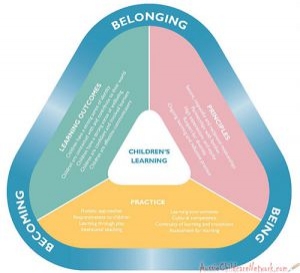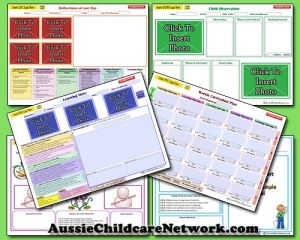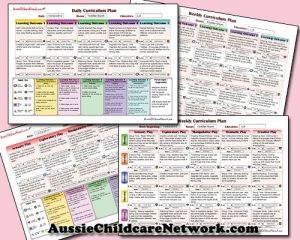An Individual Learning Plan (ILP) in early childhood is a tailored document that outlines specific goals, strategies, and supports for a child, particularly one with a disability, developmental delay, or unique learning needs. The following article provides information on What Does An ILP Include, Benefits Of Using An ILP, When To Use An ILP, When Is It Not Appropriate To Use An ILP, Creating An Effective ILP, ILP Sample and more.
What Does An ILP Include
An ILP is designed to ensure that every child can participate meaningfully in early learning environments and typically includes:
- A summary of the child’s strengths, interests, and developmental needs
- Long-term goals and more immediate, achievable short-term objectives
- Teaching strategies that are evidence-based and aligned with the child’s learning style
- Adjustments or supports needed to help the child engage in daily routines and activities
- Collaborative input from families, educators, and allied health professionals (like speech or occupational therapists)
ILPs are living documents—regularly reviewed and updated—and they align with frameworks like the EYLF and the National Quality Standard, especially around inclusion and assessment.
Benefits Of Using An ILP
Using an Individual Learning Plan (ILP) in early childhood offers a range of benefits that go beyond just supporting children with additional needs—it’s about creating a more inclusive, responsive, and empowering learning environment. Here’s how ILPs can make a meaningful difference:
- Personalised learning: ILPs tailor goals and strategies to each child’s strengths, interests, and developmental needs, ensuring learning is relevant and engaging.
- Stronger family partnerships: They invite families into the planning process, building trust and aligning goals between home and the early learning setting.
- Clear, measurable goals: ILPs help educators set focused, achievable objectives that can be tracked over time, supporting intentional teaching.
- Inclusion and equity: By identifying and addressing barriers to participation, ILPs promote equitable access to learning for all children.
- Collaboration with specialists: They provide a structure for integrating recommendations from allied health professionals like speech pathologists or OTs.
- Smooth transitions: ILPs support continuity of learning when children move between rooms, services, or into school, by documenting what works best for them.
- Empowered educators: With a clear plan in place, educators feel more confident and equipped to support diverse learners and reflect on their practice.
When To Use An ILP
An Individual Learning Plan (ILP) is used when a child in early childhood education requires additional support to fully participate, thrive, and meet developmental milestones. You’d typically use an ILP when:
- A child has a diagnosed disability or developmental delay—to ensure inclusive, targeted support aligned with their needs.
- There are concerns about a child’s learning, behavior, or social-emotional development, even without a formal diagnosis.
- Allied health professionals (e.g., speech pathologists, OTs) are involved and have provided recommendations that need to be embedded into daily routines.
- The child is in out-of-home care or has experienced trauma, requiring a more intentional, responsive approach.
- Families request additional support or have specific goals they’d like to work on collaboratively with educators.
ILPs are also valuable when transitioning children between settings (e.g., from early learning to school), as they provide continuity and clarity around what works best for the child.
They’re not just for challenges—they’re about amplifying strengths and ensuring every child has equitable access to learning.
When Is It Not Appropriate To Use An ILP?
While ILPs are powerful tools for inclusion and support, there are times when they may not be the most appropriate or necessary approach:
- When a child is developing typically and doesn’t require additional support beyond what’s already embedded in your program. In these cases, the regular planning cycle and documentation aligned with the EYLF is sufficient.
- If the goals are better suited to a different setting, such as home-based routines or clinical therapy, and don’t directly relate to the child’s participation in the early learning environment.
- When there’s no collaborative input—ILPs should be co-developed with families and professionals. If that partnership isn’t possible or appropriate at the time, it may be better to delay the ILP until meaningful collaboration can occur.
- If the child’s needs are short-term or situational, such as adjusting to a new environment or recovering from illness, and can be addressed through flexible, responsive planning rather than a formal ILP.
In essence, ILPs are most effective when they’re purposeful, collaborative, and clearly linked to the child’s participation and learning in your setting.
Creating An Effective ILP
Creating an effective Individual Learning Plan (ILP) in early childhood is all about clarity, collaboration, and connection to the child’s everyday experiences. Here’s a step-by-step guide to help you design one that’s both practical and powerful:
Start with a strengths-based snapshot
Begin by gathering insights from families, educators, and any allied health professionals. Focus on:
- The child’s interests, preferences, and motivators
- Strengths across developmental domains
- Any diagnosed needs or emerging concerns
Set clear, meaningful goals
Develop:
- Long-term goals that reflect broader developmental outcomes (e.g., “Develop confidence in social play”)
- Short-term objectives that are specific, measurable, and achievable (e.g., “Initiates play with a peer using a greeting phrase 3 times a week”)
Use plain, positive language that focuses on what the child will do—not what they won’t.
Design inclusive, everyday strategies
Link goals to real routines and play experiences. For example:
- Use visual supports during transitions
- Embed fine motor tasks into art or sensory play
- Model and scaffold language during group time
Collaborate and document
Co-create the ILP with families and relevant professionals. Include:
- Who contributed and their roles
- How progress will be monitored
- A review date (typically every 3–6 months)
Link to EYLF and NQS
Ensure the ILP aligns with:
- EYLF Learning Outcomes (especially Outcome 1: Identity and Outcome 3: Wellbeing)
- NQS Quality Areas 1 (Educational Program and Practice) and 6 (Collaborative Partnerships)
Keep it dynamic
An ILP isn’t a static document. Reflect, adapt, and celebrate progress regularly. Use observations, learning stories, and family feedback to update goals and strategies.
How Does ILPs Align With EYLF and NQS
ILPs are a beautiful example of how thoughtful planning can bring the EYLF and NQS to life in a deeply personalised way. Here’s how they align:
EYLF Alignment
ILPs reflect the EYLF’s vision of Belonging, Being and Becoming by:
- Supporting Outcome 1: Children have a strong sense of identity—ILPs help educators nurture each child’s unique identity through tailored strategies.
- Promoting Outcome 3: Children have a strong sense of wellbeing—by embedding supports that foster emotional regulation, resilience, and confidence.
- Embedding Outcome 5: Children are effective communicators—especially when ILPs include strategies from speech pathologists or focus on language-rich environments.
- Practices like responsiveness to children, intentional teaching, and learning through play are central to ILPs, ensuring they’re not just plans, but living reflections of the child’s world.
NQS Alignment
ILPs directly support several quality areas:
- QA1 – Educational Program and Practice: ILPs demonstrate intentional, responsive planning tailored to individual needs (especially Elements 1.1.2 and 1.2.1).
- QA5 – Relationships with Children: They foster secure, respectful relationships by recognising and responding to each child’s cues and capabilities.
- QA6 – Collaborative Partnerships with Families and Communities: ILPs are co-created with families and specialists, strengthening trust and shared goals.
- QA7 – Governance and Leadership: Services that embed ILPs show strong leadership in inclusive practice and reflective planning.
ILP Sample
Child’s Name: Ava
Date of Birth: 12/03/2021
Educator: Lorina
Date Created: 22/06/2025
Review Date: 22/09/2025
1. Strengths and Interests
-
Enjoys sensory play and water activities
-
Responds well to music and rhythm
-
Strong visual learner; engages with picture books and visual cues
2. Developmental Focus Areas
-
Expressive language development
-
Emotional regulation during transitions
-
Peer interaction and turn-taking
3. Long-Term Goal
Ava will confidently express her needs and emotions using words or gestures during daily routines and play.
4. Short-Term Objectives
-
Use 2–3 word phrases to request help or express feelings during group time
-
Identify and name 3 basic emotions using visual supports
-
Initiate or respond to peer interaction at least once per day
5. Teaching Strategies
-
Use visual emotion cards and a “feeling toolbox”
-
Model simple phrases and offer sentence starters
-
Embed turn-taking games into outdoor play
-
Provide consistent routines with visual schedules
6. Collaborators
-
Family (Parent: Sarah)
-
Speech Pathologist (weekly sessions)
-
Lead Educator and Inclusion Support Officer
7. Monitoring and Review
-
Weekly observations and anecdotal notes
-
Family feedback via communication journal
-
Review meeting scheduled for September
Further Reading
Observations in Childcare
References:
Individual Learning Plan, NSW Department of Education
Individual Learning Plans, KU Sector Capacity Building
Individual Activity Learning Plan, Autism Awareness







 Here is the list of the EYLF Learning Outcomes that you can use as a guide or reference for your documentation and planning. The EYLF
Here is the list of the EYLF Learning Outcomes that you can use as a guide or reference for your documentation and planning. The EYLF The EYLF is a guide which consists of Principles, Practices and 5 main Learning Outcomes along with each of their sub outcomes, based on identity,
The EYLF is a guide which consists of Principles, Practices and 5 main Learning Outcomes along with each of their sub outcomes, based on identity, This is a guide on How to Write a Learning Story. It provides information on What Is A Learning Story, Writing A Learning Story, Sample
This is a guide on How to Write a Learning Story. It provides information on What Is A Learning Story, Writing A Learning Story, Sample One of the most important types of documentation methods that educators needs to be familiar with are “observations”. Observations are crucial for all early childhood
One of the most important types of documentation methods that educators needs to be familiar with are “observations”. Observations are crucial for all early childhood To support children achieve learning outcomes from the EYLF Framework, the following list gives educators examples of how to promote children's learning in each individual
To support children achieve learning outcomes from the EYLF Framework, the following list gives educators examples of how to promote children's learning in each individual Reflective practice is learning from everyday situations and issues and concerns that arise which form part of our daily routine while working in an early
Reflective practice is learning from everyday situations and issues and concerns that arise which form part of our daily routine while working in an early Within Australia, Programming and Planning is reflected and supported by the Early Years Learning Framework. Educators within early childhood settings, use the EYLF to guide
Within Australia, Programming and Planning is reflected and supported by the Early Years Learning Framework. Educators within early childhood settings, use the EYLF to guide When observing children, it's important that we use a range of different observation methods from running records, learning stories to photographs and work samples. Using
When observing children, it's important that we use a range of different observation methods from running records, learning stories to photographs and work samples. Using This is a guide for educators on what to observe under each sub learning outcome from the EYLF Framework, when a child is engaged in
This is a guide for educators on what to observe under each sub learning outcome from the EYLF Framework, when a child is engaged in The Early Years Learning Framework describes the curriculum as “all the interactions, experiences, activities, routines and events, planned and unplanned, that occur in an environment
The Early Years Learning Framework describes the curriculum as “all the interactions, experiences, activities, routines and events, planned and unplanned, that occur in an environment


